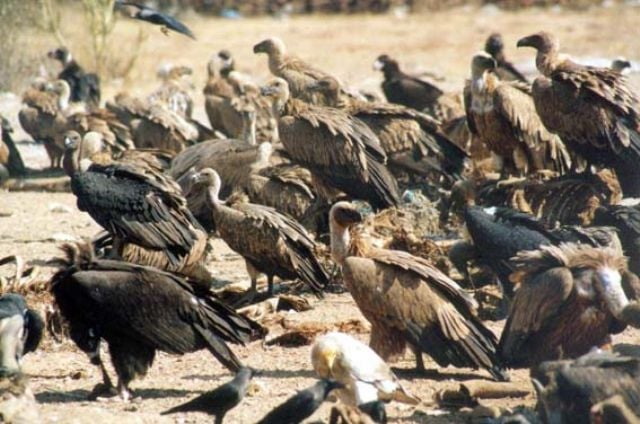
[ad_1]
Every year, the world celebrates International Vulture Awareness Day (IVAD) in September, to raise awareness of vultures. However, the picture is not rosy for these magnificent birds. In Africa, vulture populations have declined dramatically over the past 50 years, with declines of up to 97% for some species. While vultures are often seen as sinister birds that signify bad news or even death, the vital role they play in the environment is irreplaceable.
Vultures act as nature’s cleaning team, removing carcasses from our surroundings with their unique cleaning abilities. It is estimated that a single vulture can be worth up to $ 11,000 for these cleaning services alone. The loss of vultures in the ecosystem can have devastating ecological consequences, as seen in the 1990s when vulture populations in Asia collapsed by up to 99% after feeding on carcasses of cattle containing diclofenac – a veterinary medicine used to treat livestock, which is toxic to vultures. . This has resulted in the increase of other scavengers, including rats and dogs, which in turn have increased the transmission of disease from carcasses to animals and humans. Indeed, a 2008 study on the consequences of this crash noted an increase in human rabies cases, alongside the decline of vulture populations in the subcontinent.
African vultures face a variety of threats, primarily poisoning which accounts for around 61% of vulture deaths on the continent. Poisoning can be intentional, when poachers poison carcasses to kill vultures, as they can alert authorities to poaching activities or unintentional when vultures are collateral damage in retaliatory poisoning cases resulting from a conflict between man and fauna. Vultures are also killed for belief-based use, where their parts are used to make traditional medicines to cure illnesses or imbue the consumer with magical powers or bring good luck. Finally, the development of electrical infrastructures on the continent increasingly threatens these endangered birds and are responsible for up to 9% of vulture mortalities by electrocutions or collisions with these infrastructures.
To stem this decline, BirdLife International, the world’s largest nature partnership, and its network of partners are working to reverse the decline of vultures through multiple cross-cutting interventions by engaging local communities at the heart of these approaches. At the forefront of this fight is the need to tackle poisoning factors by mitigating human-wildlife conflict, responding quickly to wildlife poisoning cases and enforcing strict pesticide regulations. and other toxic substances used to poison wildlife.
In addition, BirdLife partners on the continent are addressing the drivers of belief-based use, through outreach and engagement with local stakeholders such as traditional healers to mainstream the use of herbal treatment regimens as alternatives to vulture parties.
Another key intervention is the creation of Vulture Safety Zones (VSZ), which are safe havens for vultures and provide fertile ground for people to thrive. Vulture-safe areas are free from key threats including poisoning and electrocution, especially in areas where vultures need significant protection. These zones are created through collaborations with landowners, managers and community members. In southern Africa, more than 500,000 hectares of VSZ have been established in Zambia, Zimbabwe and South Africa, and more are in preparation. In addition, partnerships and collaborations between various stakeholders will be essential to prevent African vultures from sliding into extinction.
By Salisha Chandra
The author is Vulture Conservation Manager at BirdLife International and can be contacted via [email protected]
Source link